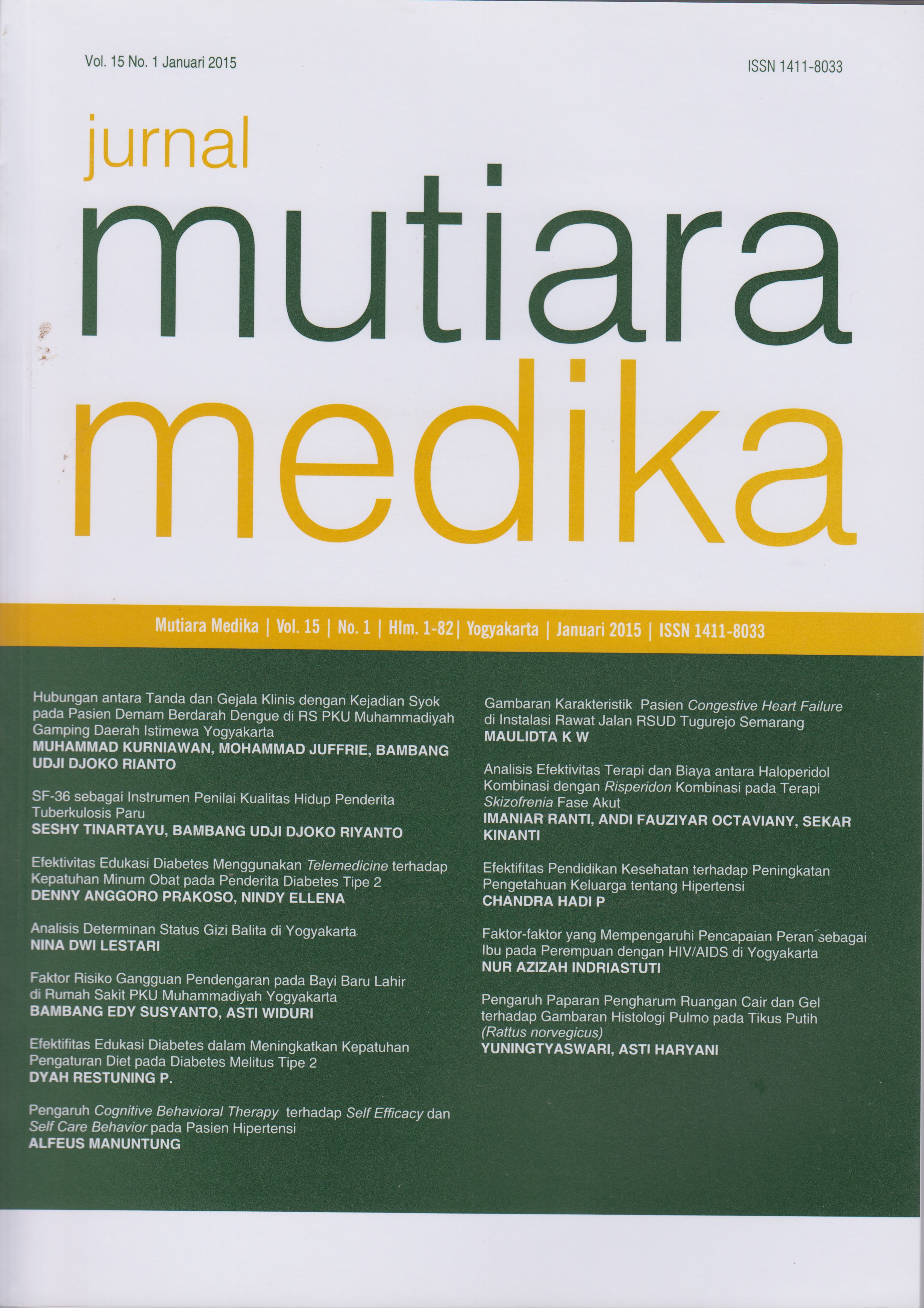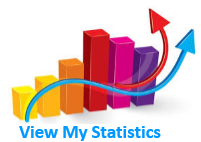Analisis Determinan Status Gizi Balita di Yogyakarta
DOI:
https://doi.org/10.18196/mmjkk.v15i1.2490Keywords:
determinants of nutritional status, child, determinan status gizi, balitaAbstract
Masalah gizi kurang balita merupakan masalah aktual di wilayah Puskesmas Sentolo 1. Tujuan penelitian ini untuk mengetahui faktor yang mempengaruhi status gizi balita. Penelitian bersifat observasional menggunakan cross sectional. Responden balita 12-59 bulan sebanyak 155 orang. Data determinan status gizi diperoleh melalui kuesioner, sedangkan status gizi ditentukan berdasarkan indeks Berat Badan/Umur. Hasil penelitian menunjukkan terdapat hubungan bermakna antara usia balita, riwayat pemberian ASI, asupan makanan, persepsi ibu, pola pengasuhan dengan status gizi balita. Faktor dominan yang mempengaruhi status gizi adalah asupan makanan.
Under nutrition was still a prior problem in Sentolo 1 Public Health Center. The objectives of this study were to determine nutritional status in children under five years and related factors. This study was an observational use cross sectional study was conducted with 155 children under five year. Data is determinants of nutritional status was assessed using anthropometric measurement. There was a significant association between child’s age, exclusife breastfeeding, child’s dietary intake, caregivers’ practice and mother’s perception with child’s nutritional status and child’s dietary energy intake was the most factor that significant correlated.
References
WHO. The Millenium Development Goals (MDGs) Report 2013. United Nation New York. 2013. Diperoleh tanggal 25 Desember 2013 dari http://www.who.int/nutrition/publications/severemalnutrition
Riskesdas. Riset Kesehatan Dasar 2013. Kementerian Kesehatan RI. 2013. https://www.litbang.depkes.go.id
Dinkes Kab Kulon Progo. Profil Kesehatan Kabupaten Kulon progo Tahun 2014 (Data tahun 2013). Kulon Progo, DIY. 2014.
United Nations Children’s Fund (UNICEF). Improving Child Nutrition: the Achievable Imperative for Global Progress, UNICEF, New York, 2013.
Naghashpour, M., Shakerinejad, G., Lourizadeh, MR., Hajinajaf, S., and Jarvandi, F. Nutrition Education Based on Health Belief Model Improves Dietary Calcium Intake among Female Students of Junior High Schools. J Health Popul Nutr, 2014; 32 (3): 420-429p.
Stanhope, M. & Lancaster, J. Public Health Nursing Population Centered Health Care in The Community. (8th e). Missouri: Elsevier. 2012.
UNICEF. Gender influences on child survival, health and nutrition:a narative review. New York. 2011.
Nakamori M, Nguyen XN, Nguyen CK, Cao TH, Nguyen AT, Le BM et al. 2010. Nutritional Status, Feeding Practice and Incidence of Infectious Disease among Children Aged 6 to 18 Months in Northern Mountainous Vietnam. J med invest, 2010; 57 (1-2): 45-53.
Charmarbaglawa, R., Ranger., M., Waddington H, White H. The Determination of Child Health and Nutrition: a Meta Analysis. Departemen of Economic, University of Maryland and Operation Evaluation Departement, World Bank. 2010.
Annim, S.K. & Imai K.S. Nutritional Status of Children, Food Consumtion Diversity and Ethnicity in Lao PDR. Economics School of Social Sciece. University of Manchaster. UK. 2014.
Hayati. Analisis Faktor Orang Tua terhadap Status Gizi Balita. Pendekatan Teori Health Belief Model. Program studi ners Fakultas Keperawatan Universitas Airlangga. 2014.
Sartika, R. An Anlysis on the Usage of Health Service Related to Nutritional Status of Under Five Years Old Children. J Kesehatan Masyarakat Nasional, 2010; 5 (2).
Mirayanti, N. Hubungan Pola Asuh Pemenuhan Nutrisi dalam Keluarga dengan Status Gizi Balita di Kelurahan Pasir Gunung Selatan Kecamatan Cimanggis Kota Depok. Tesis. Fakultas Ilmu Keperawatan Magister Ilmu Keperawatan: Depok. 2012.
Putri, D.S.K & Wahyono, T.Y.M. Faktor Langsung dan Tidak Langsung yang Berhubungan dengan Kejadian Wasting pada Anak Umur 6-59 Bulan di Indonesia Tahun 2010. Media litbangkes, 2013; 2 (3): 110-121
Downloads
Issue
Section
License
Copyright
Authors retain copyright and grant Mutiara Medika: Jurnal Kedokteran dan Kesehatan (MMJKK) the right of first publication with the work simultaneously licensed under an Attribution 4.0 International (CC BY 4.0) that allows others to remix, adapt and build upon the work with an acknowledgment of the work's authorship and of the initial publication in Mutiara Medika: Jurnal Kedokteran dan Kesehatan (MMJKK).
Authors are permitted to copy and redistribute the journal's published version of the work (e.g., post it to an institutional repository or publish it in a book), with an acknowledgment of its initial publication in Mutiara Medika: Jurnal Kedokteran dan Kesehatan (MMJKK).
License
Articles published in the Mutiara Medika: Jurnal Kedokteran dan Kesehatan (MMJKK) are licensed under an Attribution 4.0 International (CC BY 4.0) license. You are free to:
- Share — copy and redistribute the material in any medium or format.
- Adapt — remix, transform, and build upon the material for any purpose, even commercially.
This license is acceptable for Free Cultural Works. The licensor cannot revoke these freedoms as long as you follow the license terms. Under the following terms:
Attribution — You must give appropriate credit, provide a link to the license, and indicate if changes were made. You may do so in any reasonable manner, but not in any way that suggests the licensor endorses you or your use.
- No additional restrictions — You may not apply legal terms or technological measures that legally restrict others from doing anything the license permits.






